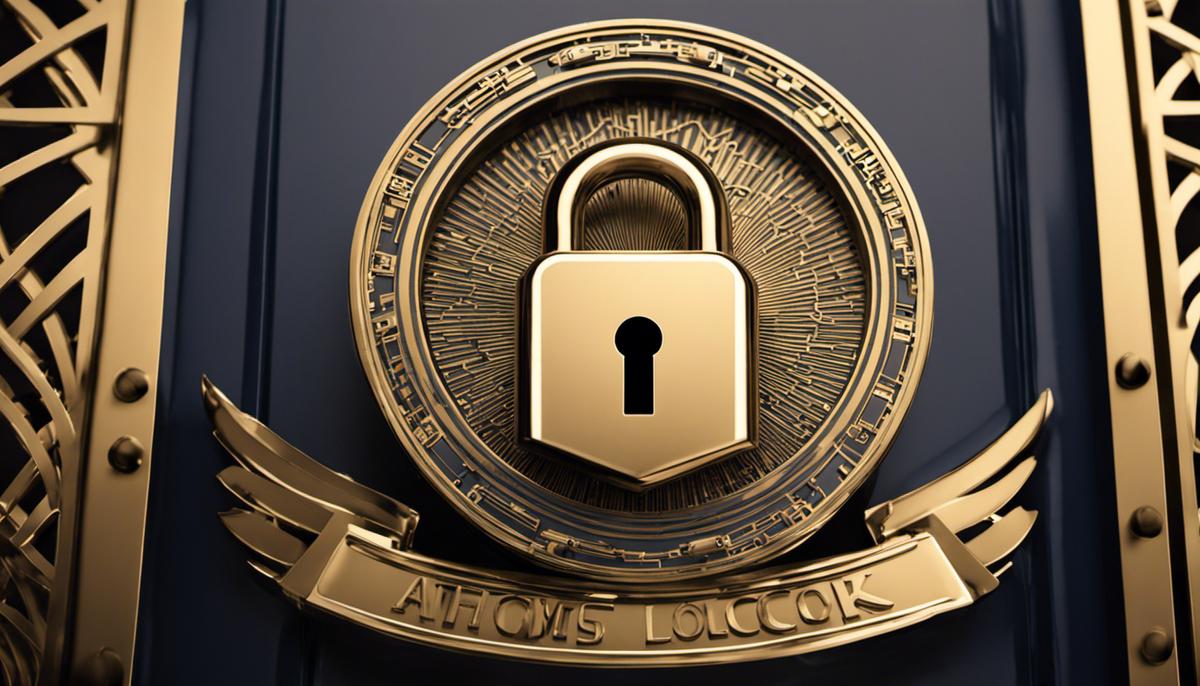Your cart is currently empty!

Access Your Old Facebook Account Without Phone or Email
In the age of digital connectivity, social media platforms such as Facebook have become an integral part of our daily lives. From sharing life moments, connecting with friends and family, to conducting business activities, the importance of accessing your Facebook account cannot be understated. This essay aims to shed light on the crucial aspects of Facebook’s password recovery procedures, especially when the commonly used recovery options like phone number and email are no longer accessible. It further looks into the role of ‘Trusted Contacts’ as an account recovery tool and guides you through the process of reaching out to Facebook’s support team effectively. Lastly, it provides insights on securing your Facebook account to avoid any unexpected loss of access in the future.
Understanding Facebook’s Password Recovery Procedure
Understanding the Facebook Recovery Process
Typically, accessing an old Facebook account requires you to remember your associated email address or phone number. However, if you’ve lost access to both, it can be a bit challenging, but not impossible to recover your account. Facebook has a set procedure for such scenarios, designed to verify your identity and restore your access.
Initiating the Facebook Account Recovery Process
To initiate the account recovery process, visit Facebook’s main page and click on “Forgotten Account?” This option will lead you to the Recovery page. As you do not have access to your email address or phone number, you will have to click on “No longer have access to these?”
Facebook will then prompt you to enter a new email address or phone number that you can access, which will be used for the recovery process. Make sure you have access to this new email or phone number as Facebook will send a verification code which you will need to continue the recovery process.
Account Recovery Information Requirements
Facebook will then ask you a series of questions to verify your identity. You will be asked to confirm your full name and date of birth initially, which should match the details found on your Facebook profile. Additional questions may include identifying friends in tagged photos, previous Facebook posts, or confirming other account details.
In some cases, Facebook might also ask for a form of ID like a passport or driver’s license. This step is to ensure that the person trying to access the account is veritably you. If Facebook requests this, you would have to upload a picture of your ID where your name, birthday, and photo are visible. The document will be deleted from Facebook’s records after your identity is confirmed.
Responding to Facebook’s Decisions
Once you have provided the requested information, Facebook will review the details. After the review, Facebook will contact you, typically within 3 to 5 days. Patience is key during this period. If the information you’ve provided matches the account information, you will be granted access to your account. If not, Facebook will decline your request, and you may have to go through the process again with more accurate information.
Remember, Facebook takes account security very seriously. Hence, the process, while lengthy, ensures that customer privacy is safeguarded at all costs.

Knowing About Trusted Contacts
Setting Up Trusted Contacts on Facebook
Facebook introduced the Trusted Contacts feature as a way of making account recovery simpler and safer. If you have previously set up this feature, your designated Trusted Contacts can assist you in regaining access to your account, even if you’ve lost access to your registered email and phone number.
Understanding the Role of Trusted Contacts
Trusted Contacts are close friends you can choose in your security settings on Facebook. Once assigned, these friends can help you recover your account if it gets locked or you’re unable to login. If you’ve forgotten your login information or lost access to your phone number or email, these friends can send you recovery codes to get back into your account.
Using Trusted Contacts for Account Recovery
To use the Trusted Contacts feature for account recovery, you need to have your trusted contacts set up in advance. Take note that you will need at least three friends to serve as your Trusted Contacts.
- Go to Facebook’s login page and click the “Forgot Password” link.
- Enter the email address, mobile phone number, full name, or username associated with your account, then click “Search.”
- On the next page, select the “No longer have access to these?” option.
- You’ll be prompted to enter a new email address or phone number. Do so, and click “Continue.”
- Finally, you’ll be presented with a set of instructions to follow. These will include contacting your Trusted Contacts and asking them to visit the Facebook.com/recover link to get a security code. You’ll need to collect these security codes from your Trusted Contacts to enter into the fields provided.
In the event of lost access to your email or phone number, Trusted Contacts can be a lifesaver. They offer not just an additional layer of security, but also a reliable recovery option for your Facebook account.

Composing a Report for Facebook Support
Step 1: Connecting with Facebook’s Support Team
Facebook does not have the traditional customer service line, so you’ll have to navigate through their Help Center. Start by going to the Facebook Help Center’s main page. Click on the menu icon in the top right corner, then select “Help and Support,” followed by “Help Center.” Once there, in the search bar type in “Hacked account” or “Login problems.”
Step 2: Reporting the Issue
After the search, select the most appropriate article relating to your problem, such as “I can’t log in to Facebook.” Scroll down until you see “My Facebook account was compromised and my password changed. What should I do?” This will take you to the Facebook’s report compromised account page. Here, you will be asked to fill out a short form with related information to report your issue.
Step 3: Providing Detailed Information
In this form, provide details such as when you last had access to your account and any extra email addresses attached to it. Make sure to carefully explain the circumstances of losing access to your Facebook account, including your loss of access to your email and phone number. Write in a clear, concise, and formal tone to ensure your situation is comprehensible and taken seriously.
Step 4: Attaching Proof of Identity
To help verify your identity, Facebook may ask for a copy of your identification. This could be a driver’s license, passport, or birth certificate among others. There are instructions on how to attach these files in the appropriate format on their website. Be sure to follow these guidelines to prevent any delays in your application.
Step 5: Finalizing Your Report
Before you submit the form, review all the information you’ve provided to ensure it’s correct. Remember, the more detailed and clear your report, the faster and more effectively Facebook’s support team can assist you. After you’ve double-checked everything, click “Send” to submit your report.
Step 6: Waiting for Facebook’s Response
After sending the report, wait for Facebook support to respond. This could take anywhere from a few days to a few weeks, so patience is necessary. They will review the information you provided and, if they can confirm it, they’ll contact you at the email address you provided in your report to guide you on how to regain access to your account.

Securing your Facebook Account
Understanding Security of Your Facebook Account
The first step to securing your Facebook account is understanding the different factors and methods used for securing it. This implies not just setting a strong password and keeping it safe but also keeping your contact details like phone numbers or email addresses updated and known to you at all times. This information helps in case you need to recover your account.
Setting Up Two-Factor Authentication
Facebook offers a security feature called two-factor authentication. This feature provides an extra layer of security for your account. When you log into Facebook from a new device or browser, you will be asked to enter a special login code.
To set up two-factor authentication, follow these steps:
- Click the “down” arrow on the right-hand corner of your Facebook menu bar.
- Click on “Settings & Privacy.”
- Go to “Settings.”
- Look for the “Security and Login” section on the left-hand side of the screen.
- Click on “Use two-factor authentication.”
- You will be guided through the steps to set it up, which can involve entering your phone number or selecting another method like using a third-party authentication app.
Remember to keep the method you choose updated. For instance, if you change your phone number, update the number associated with two-factor authentication to prevent losing access in the future.
Regular Password Change
Changing your password regularly is an additional way to secure your account. Use a combination of uppercase and lowercase, numbers and symbols to create a strong password. Don’t share your password with anyone and avoid using common words or phrases.
You can change your password by navigating to the “Security and Login” section, as discussed above. Click on “Change password,” and enter your current and new passwords in the text fields provided. Then, click “Save Changes.”
Set Up Trusted Contacts
Facebook provides a feature called Trusted Contacts, which are friends you can reach out to if you ever have trouble accessing your account. You can set up to five trusted contacts. In case you’re locked out of your account, these friends can help you recover it.
To set this up:
- Go to your “Security and Login” settings.
- Scroll down and click on “Choose 3 to 5 friends to contact if you get locked out.”
- Follow the on-screen prompts to set this up.
Awareness of Phishing Scams
Phishing scams attempt to steal your login information by pretending to be a service you trust. You can protect your account by being aware of these scams, not clicking on suspicious links, and verifying the web address if you’re not sure.
By following these steps, you can ensure a high level of security for your Facebook account and reduce the likelihood of losing access.

Through the information presented, it’s apparent that regaining access to your Facebook account without the typical recovery options can be a challenge, but it’s not insurmountable. Armed with knowledge on Facebook’s recovery procedures, the use of trusted contacts, and effective communication with their support team, you can navigate this predicament. It also highlights the pressing need to proactively secure your Facebook account by adopting methods such as two-factor authentication and regular password changes. Remember, securing your digital presence is not a one-time process but a constant commitment. Stay informed, stay prepared!
